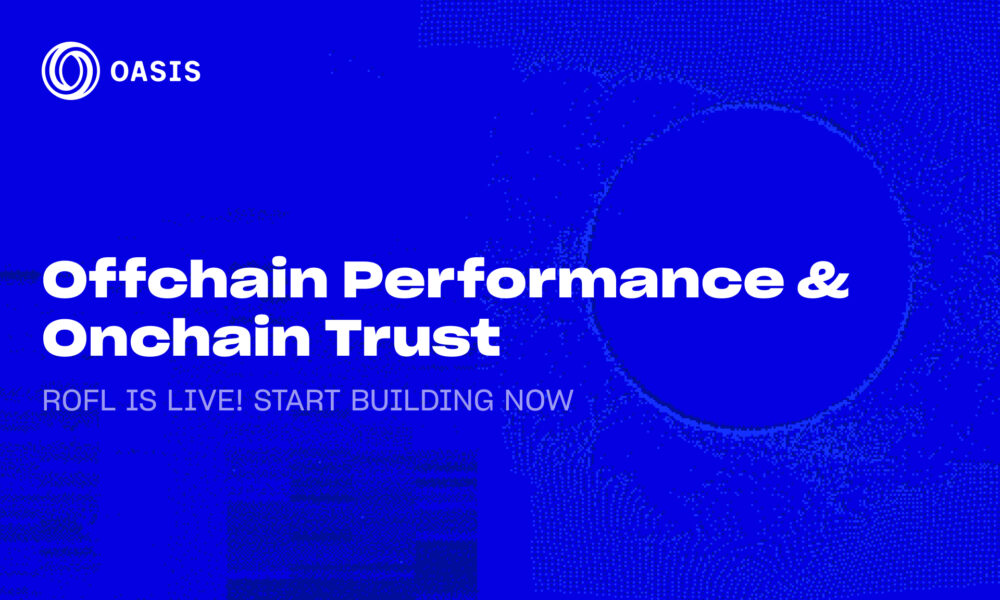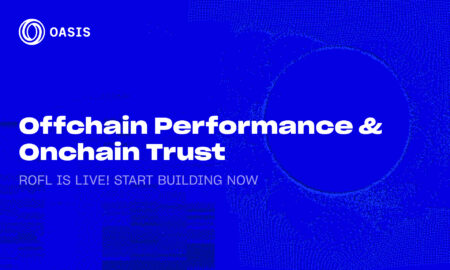Business growth demands continuous evaluation of your server infrastructure to maintain peak performance. Server upgrades represent strategic decisions that directly impact operational efficiency and competitive advantage. Understanding the right timing for these upgrades can save significant resources while maximizing business potential.
Understanding Server Upgrade Indicators
Modern enterprises face increasing demands on their server infrastructure daily. Server performance directly impacts employee productivity and customer satisfaction levels. The decision to upgrade often stems from multiple interconnected factors rather than a single performance issue.
Rack-mounted servers have revolutionized data center efficiency and space utilization. Compact solutions deliver remarkable performance in limited spaces. The 1u supermicro server brings enterprise-grade capabilities to organizations seeking efficient infrastructure solutions.
Throughout years of managing data centers, the impact of numerous upgrade cycles has become evident. Experience with refurbished enterprise servers underscores the importance of timing these transitions effectively. An effective upgrade strategy balances immediate needs with future growth requirements to ensure seamless operations.
Performance Bottleneck Analysis
- Consistent CPU utilization above 70%
- Memory usage regularly exceeding 85%
- Storage I/O delays affecting operations
- Network latency issues during peak hours
Comparison Table: Upgrade Indicators and Impact
| Indicator | Impact Level | Upgrade Priority | Business Risk |
| High CPU Usage | Critical | Immediate | Performance Loss |
| Memory Constraints | High | Near-term | Application Crashes |
| Storage Limitations | Moderate | Planning Required | Data Access Delays |
| Network Bottlenecks | Variable | Situational | Communication Issues |
Cost-Benefit Considerations
Organizations must evaluate the financial implications of server upgrades carefully. Working with used super micro servers often provides cost-effective solutions for growing businesses. The market offers various options, including surplus servers for sale that maintain high-performance standards.
Quality refurbished servers deliver excellent value while meeting performance requirements. Many businesses successfully operate with refurbished PowerEdge r630 systems in production environments. Your upgrade budget should consider both immediate costs and long-term operational expenses.
Smart procurement strategies include exploring wholesale refurbished servers from reliable vendors. Server parts store locations offer components for gradual upgrades when a complete replacement isn’t necessary. Consider both purchase costs and ongoing operational expenses in your decision-making process.
Infrastructure Scalability Assessment
Server scalability directly impacts your ability to handle business growth. Unix servers provide robust scaling options for expanding operations. Modern infrastructure demands flexibility to accommodate changing workloads and user demands.
Many organizations overlook the importance of proper scalability planning. Linux servers for sale offer various scaling options to meet growing business needs. Your infrastructure should support both vertical and horizontal scaling without major disruptions.
Refurbished storage server solutions can provide cost-effective scalability options. Working with data center surplus equipment requires careful evaluation of growth potential. Consider both immediate scaling needs and long-term expansion possibilities.
Performance Monitoring and Analytics
Regular performance monitoring helps identify upgrade needs before they become critical. NVME servers provide detailed performance metrics that guide upgrade decisions. Understanding your server’s performance patterns helps optimize upgrade timing.
Implementing monitoring solutions across diverse server configurations has highlighted the importance of comprehensive monitoring, particularly in Linux VPS environments. A robust monitoring strategy should encompass all critical performance indicators to ensure optimal server performance.
Historical performance data proves invaluable for upgrade planning. Used enterprise hard drives require careful monitoring to prevent data access issues. Regular performance reviews help identify emerging bottlenecks before they impact operations.
Hardware Lifecycle Management
Effective lifecycle management prevents unexpected server failures and downtime. Server refurbished options often extend hardware lifecycles cost-effectively. Your management strategy should include regular hardware assessments and replacement planning.
Working with used server hard drives requires careful attention to wear patterns. Many organizations successfully extend server lifespans through strategic component upgrades. Regular maintenance and proactive replacements help prevent unexpected failures.
Component reliability varies significantly across different server generations. Refurb servers need thorough testing and monitoring throughout their lifecycle. Consider both age and usage patterns when evaluating hardware replacement needs.
Security Considerations for Upgrades
Security requirements often drive server upgrade decisions. Modern threats require robust hardware security features found in newer servers. Your security strategy must account for hardware-level vulnerabilities and protections.
Asus servers provide advanced security features that protect critical data. Working with surplus servers requires careful security evaluation and configuration. Each upgrade decision should consider security implications alongside performance benefits.
Organizations must maintain compliance with evolving security standards. Refurbished supermicro servers need security patches and firmware updates. Consider both current and future security requirements in upgrade planning.
Virtualization Strategy Implementation
Moving to virtualized environments requires careful planning and resource allocation. Server performance directly impacts virtualization success rates in production environments. The 1u supermicro server platforms handle virtualization workloads efficiently while maintaining reliability standards.
Modern data centers thrive on virtualization technologies that maximize hardware utilization. Working with refurbished enterprise servers in virtualized environments demands thorough testing and validation. Your virtualization strategy must account for both current workloads and future scaling needs.
Overseeing numerous virtualization projects across various hardware platforms has shown that Supermicro servers often exceed expectations in virtualized environments when configured correctly. Each virtual host requires careful resource allocation to avoid performance issues and ensure optimal efficiency.
Data Center Environmental Planning
Heat management plays a crucial role in server longevity and performance. Working with surplus servers for sale requires understanding their cooling requirements. Modern data centers need sophisticated environmental controls to maintain optimal operating conditions.
Power efficiency impacts both operating costs and environmental footprint. Linux servers for sale often include advanced power management features that reduce energy consumption. Your environmental planning should include both immediate and long-term power requirements.
Environmental monitoring systems help prevent temperature-related failures. Working with unix servers requires attention to airflow and cooling patterns. Professional data centers maintain strict environmental controls to protect hardware investments.
Network Infrastructure Upgrades
Network bottlenecks often limit server performance more than processor or memory constraints. Server refurbished solutions need thorough network testing to ensure compatibility. Your network infrastructure must support peak data transfer requirements without introducing latency.
Working with refurbished storage server equipment demands careful network planning. Many organizations encounter challenges with network limitations following server upgrades. Modern applications demand a robust network infrastructure to sustain optimal performance levels and ensure seamless operations.
Linux VPS deployments demonstrate the importance of network capacity. Network upgrades often provide immediate performance improvements across all systems. Consider both current and future bandwidth requirements when planning infrastructure changes.
Storage Architecture Evolution
Storage requirements grow exponentially in modern business environments. NVME servers provide remarkable performance improvements for data-intensive applications. Your storage architecture needs to balance performance, capacity, and cost considerations.
Working with used enterprise hard drives requires careful performance monitoring. Many organizations underestimate their storage growth requirements. Strategic storage planning prevents costly emergency upgrades later.
Data center surplus equipment often includes enterprise-grade storage solutions. Working with wholesale refurbished servers provides cost-effective storage expansion options. Your storage strategy should include both primary and backup storage considerations.
Compliance and Regulatory Planning
Regulatory requirements often influence server upgrade decisions. Working with refurbished PowerEdge r630 systems requires careful compliance documentation. Your infrastructure must meet industry-specific regulatory requirements.
Documentation plays a crucial role in maintaining compliance standards. Server parts store purchases need tracking for audit purposes. Regular compliance reviews help prevent regulatory issues before they arise.
Managing numerous compliance-focused infrastructure upgrades has underscored the importance of sourcing. Buy used server hardware from vendors who understand compliance requirements. Your upgrade strategy must account for both current and upcoming regulatory changes.
Disaster Recovery Integration
Disaster recovery capabilities influence server upgrade timing and strategy. Used server hard drives need redundancy planning to prevent data loss. Your recovery strategy must account for various failure scenarios and business continuity requirements.
Working with Asus servers in critical environments demands comprehensive backup solutions. Implementing recovery systems across various hardware configurations has highlighted that each upgrade decision must take into account its impact on recovery capabilities.
Testing recovery procedures ensures business continuity during emergencies. Refurb servers need regular backup verification and recovery testing. Your disaster recovery plan should evolve alongside infrastructure upgrades.
Staff Training and Knowledge Transfer
Technical teams need ongoing training to manage modern server infrastructure. Surplus servers require specific knowledge for maintenance and troubleshooting. Your staff training program should cover both routine operations and emergency procedures.
Documentation helps maintain operational consistency across teams. Working with refurbished supermicro servers demands specialized technical knowledge. Regular training sessions keep staff current with evolving technology requirements.
Knowledge sharing prevents operational bottlenecks during staff changes. Teams managing supermicro refurbished equipment need comprehensive documentation access. Your training strategy should include both technical and procedural components.
Planning Your Upgrade Strategy
Successful upgrades require careful planning and execution. Buy used server hardware from reputable vendors to ensure quality and reliability. Your upgrade strategy should minimize business disruption while maximizing performance improvements.
Create detailed implementation plans for each upgrade phase. Working with supermicro refurbished equipment demands thorough testing procedures. Consider timing upgrades during lower-usage periods to minimize impact.
Document all changes and configurations during upgrades. Regular testing ensures systems meet performance requirements after changes. Maintain backup plans for critical systems during upgrade processes.
Budget Planning and Financial Forecasting
Last quarter’s budget meeting was a wake-up call for our IT department. The CFO grilled me for an hour about every line item in our server upgrade proposal. After showing him the maintenance logs and repair costs for our aging equipment, he finally understood why we needed to invest in new infrastructure.
The tricky part was balancing immediate needs against long-term financial planning. We ended up creating a detailed spreadsheet tracking repair costs, downtime incidents, and productivity losses from our old servers. Each Monday morning, I’d update these numbers and send a summary to finance, building our case week by week for strategic upgrades.
Working with our finance team, we developed a rolling three-year forecast for server investments. The model factored in maintenance costs, energy savings from newer equipment, and estimated productivity gains. What sold the executive team was including the cost of potential failures and downtime if we delayed upgrades too long.
Legacy System Integration
Nobody warned me about the nightmare of integrating our ancient inventory system with the new servers. The legacy application ran on hardware that was older than some of our junior admins. We spent countless late nights testing different compatibility layers and virtualization options before finding a solution that worked.
Documentation for the old system was scattered across three different departments. Some critical information existed only in the head of our longest-serving tech, who was planning to retire next year. We quickly initiated a knowledge transfer project, recording every quirk and workaround he’d discovered over the years.
The breakthrough came when we found an old test server in the basement. It matched our production environment perfectly, giving us a safe place to experiment with integration options. Having that test bed saved us from several potential disasters and gave the team confidence in our upgrade path.
Resource Allocation Strategy
The resource allocation meeting turned into a three-hour debate about priority levels. Each department head argued their systems needed the first upgrade slot. Using performance metrics and incident reports, we created a scoring system that helped objectively prioritize equipment upgrades.
A critical server failure proved our allocation strategy needed work. The marketing team’s “non-essential” server supported our customer feedback system, something we’d overlooked in our initial assessment. That weekend taught us to dig deeper into system dependencies before making allocation decisions.
Our revised strategy now includes monthly reviews with each department head. We walk through their upcoming projects and system requirements, adjusting our upgrade schedule accordingly. Transparency has improved relationships with business units and helped prevent surprise emergencies.
Conclusion
Server upgrades represent critical investments in business infrastructure. Timing these upgrades correctly maximizes return on investment while minimizing disruption. Regular evaluation of server performance helps identify optimal upgrade timing.
Your upgrade strategy should balance cost, performance, and business requirements. Consider all available options, including quality refurbished equipment, when planning upgrades. Successful upgrades depend on careful planning and execution.
Frequently Asked Questions
How do I know it’s time to upgrade my servers?
Monitor key performance indicators like CPU usage, memory consumption, and I/O wait times. Watch for consistent performance degradation or inability to handle peak loads. Consider upgrade needs when maintenance costs increase significantly.
Should I upgrade components or replace entire servers?
This depends on your current infrastructure age and requirements. Component upgrades work well for newer servers needing specific improvements. Complete replacement often proves more cost-effective for older systems.
What’s the typical ROI timeframe for server upgrades?
Most organizations see ROI within 12-18 months through improved efficiency and reduced operational costs. Actual time frames vary based on utilization and business requirements. Track performance improvements and cost savings to calculate accurate ROI.






























